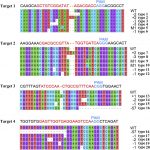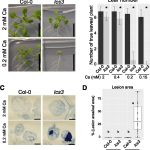Role of Plasma Membrane Aquaporins in Maize
Aquaporins belonging to the plasma membrane intrinsic protein (PIP) subfamily are key players in determining membrane water permeability. Since the overall root hydraulic conductivity (Lpr) depends on the integration of conductivity from three pathways (symplastic,  apoplastic and transcellular), it is difficult to model the effects of aquaporin expression on water uptake by roots. Many mathematical models have been developed with the hope of better understanding the complexity of root radial hydraulic conductivity and integrating its multiple variables. The MECHA model attempts to predict root radial hydraulic conductivity based on the detailed radial anatomy of the root and the distribution of the cell wall hydraulic conductivity, the cell plasma membrane permeability, the hydraulic conductance, the frequency of plasmodesmata, and the membrane reflection coefficients. Ding et al. (10.1104/pp.19.01183) have analyzed the effects of overexpression or silencing of PIP2;5, the most highly expressed aquaporin in maize (Zea mays) roots, at both the cellular and whole-plant levels. The PIP2;5 gene shows a polarized localization at the plasma membrane side facing the external medium, supporting its function in root water uptake. The authors report that the hydraulic conductivity of the cortex cells of roots grown hydroponically was higher in PIP2;5 overexpressors and lower in pip2;5 knockout lines compared with the corresponding wild-type plants. While whole-root conductivity decreased in the knockout lines compared to the wild type, no difference was observed in PIP2;5 overexpressing plants. This paradox was successfully explained by the MECHA hydraulic model. Leaf elongation rate, a proxy for xylem water potential, was faster in PIP2;5 overexpressor plants upon mild stress, but not in well-watered conditions, demonstrating that PIP2;5 may play a beneficial role in plant growth under specific conditions.
apoplastic and transcellular), it is difficult to model the effects of aquaporin expression on water uptake by roots. Many mathematical models have been developed with the hope of better understanding the complexity of root radial hydraulic conductivity and integrating its multiple variables. The MECHA model attempts to predict root radial hydraulic conductivity based on the detailed radial anatomy of the root and the distribution of the cell wall hydraulic conductivity, the cell plasma membrane permeability, the hydraulic conductance, the frequency of plasmodesmata, and the membrane reflection coefficients. Ding et al. (10.1104/pp.19.01183) have analyzed the effects of overexpression or silencing of PIP2;5, the most highly expressed aquaporin in maize (Zea mays) roots, at both the cellular and whole-plant levels. The PIP2;5 gene shows a polarized localization at the plasma membrane side facing the external medium, supporting its function in root water uptake. The authors report that the hydraulic conductivity of the cortex cells of roots grown hydroponically was higher in PIP2;5 overexpressors and lower in pip2;5 knockout lines compared with the corresponding wild-type plants. While whole-root conductivity decreased in the knockout lines compared to the wild type, no difference was observed in PIP2;5 overexpressing plants. This paradox was successfully explained by the MECHA hydraulic model. Leaf elongation rate, a proxy for xylem water potential, was faster in PIP2;5 overexpressor plants upon mild stress, but not in well-watered conditions, demonstrating that PIP2;5 may play a beneficial role in plant growth under specific conditions.



